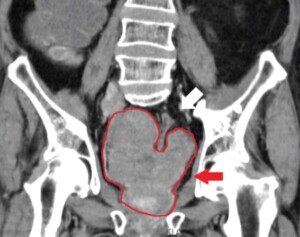If you’re thin but have excess fat within your muscles you may be at bigger heart disease risk than those with higher BMI but less fat inside their muscles.
Picture a steak you buy from the supermarket that has a lot of white “gunk” all throughout it.
The steak is muscle from the cow, and the white stuff is intramuscular fat: fat that’s stored within the muscle.
Likewise, this can happen with people’s muscle – and you do not have to be obese to have intramuscular fat.
A study published in the European Heart Journal (2025) explains a concerning health risk linked to intramuscular fat.
This fat has been found to be associated with a higher risk of death, heart attacks and heart failure, regardless of a person’s body mass index (BMI).
The intramuscular fat in beef steaks is well-known for its flavor when grilled, but its role in human health has not been well-understood until this research’s findings.
This investigation is the first to examine how intramuscular fat may impact heart disease.
The findings suggest that a low BMI or normal waist circumference don’t automatically get a person off the hook from cardiovascular disease risk.
Though obesity, especially morbid, is always a major risk factor for heart disease, an individual with a slender build can still have excess fat in their muscles – putting them at risk for such disease.
About the Study
The study was led by Professor Viviany Taqueti, a researcher at Brigham and Women’s Hospital in Boston.
Professor Taqueti emphasizes that obesity is one of the biggest threats to heart health.
However, for example, a person with a BMI of 30 is not necessarily heart-healthier than someone with a BMI of 35.
What muscles can intramuscular fat be found in?
This substance can be in nearly all muscles in the body, but the amount varies greatly from person to person.
In this study, researchers focused on understanding how this fat, along with the body’s muscle composition, affects the health of small blood vessels in the heart and how it could lead to conditions like heart attack, heart failure or even death.
They also sought to understand how this fat could affect the function of the heart over time.
How the Study Was Conducted
The research involved 669 individuals who were evaluated at Brigham and Women’s Hospital for chest pain and/or shortness of breath but did not show signs of blocked coronary arteries.
The average age of the participants was 63 (don’t let this stop you from reading if you’re a lot younger, because you don’t want to wait till you’re 63 to start being proactive about heart health), and about 70% were female, with nearly half being non-white.
All participants underwent tests using a combination of cardiac positron emission tomography (PET) and computed tomography (CT) scans to evaluate heart function.
These scans also helped assess the amount and location of fat and muscle in each patient’s body.
What the Researchers Discovered
The researchers focused on a measurement they called the “fatty muscle fraction,” which was the ratio of fat stored in muscles to the total amount of muscle and fat combined.
They found that higher amounts of intramuscular fat were linked to worse outcomes, including higher chances of coronary microvascular dysfunction (CMD), which is damage to the tiny blood vessels in the heart.
CMD is a common cause of chest pain and has been associated with an increased risk of future heart disease.
The results showed that for every 1% increase in fatty muscle fraction, there was a 2% higher risk of CMD and a 7% higher risk of future serious cardiovascular events such as heart attack and a weak heart.
However, this discovery was independent of BMI.
Interestingly, the study found that fat stored under the skin, known as subcutaneous fat, did not show the same association with increased risk.
The paper does not include answers to the following questions:
How does medication for weight loss affect fat stored in muscles compared to other areas of the body?
Can intense strength training reduce intramuscular fat or even prevent excess amounts from developing in the first place?
The researchers have plans to study the effects of exercise, diet and weight loss drugs on body composition and their ability to improve heart health.
Though this study is the first of its kind, it definitely gives you something to think about.
Nevertheless, in no way does this study invalidate a long-known fact: Obesity is a major risk factor for cardiovascular disease.
 Lorra Garrick is a former personal trainer certified by the American Council on Exercise. At Bally Total Fitness, where she was also a group fitness instructor, she trained clients of all ages for fat loss, muscle building, fitness and improved health.
Lorra Garrick is a former personal trainer certified by the American Council on Exercise. At Bally Total Fitness, where she was also a group fitness instructor, she trained clients of all ages for fat loss, muscle building, fitness and improved health.
.










































